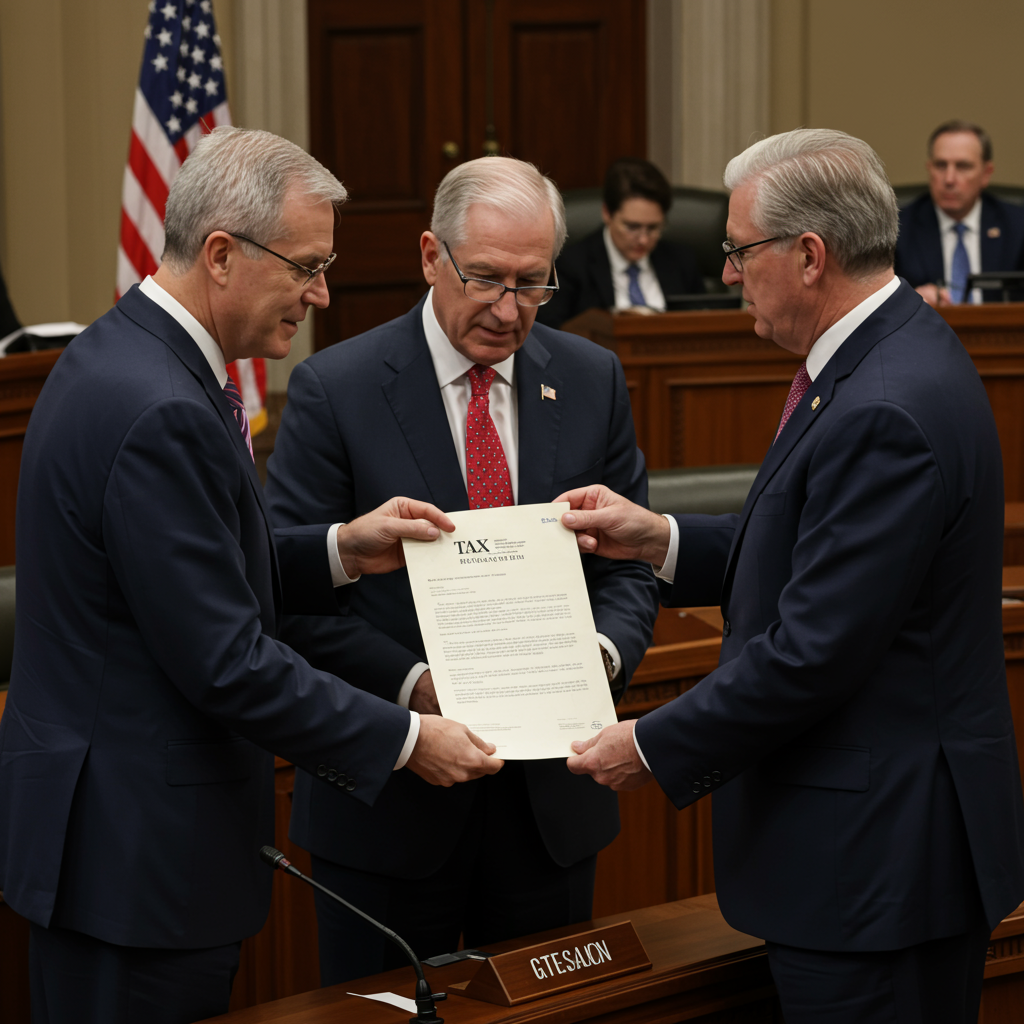In a high-stakes political drama unfolding in Texas, dozens of Democratic state legislators staged an unprecedented exodus, fleeing the state to block a contentious Republican-led redistricting plan. This strategic maneuver aimed to deny the GOP-controlled legislature the vital quorum needed to pass new voting maps, sparking a national debate over election integrity and partisan power. The bold action by Texas Democrats, now in their second week out of state as of August 2025, has escalated into a fierce standoff with severe political and legal ramifications.
The Quorum Break: A Risky Legislative Tactic
The core of this legislative deadlock lies in the concept of a “quorum break.” For the Texas House of Representatives to conduct business, including voting on legislation, a minimum number of members—100 of its 150—must be present. By absconding from Austin, over 50 Democratic lawmakers effectively paralyzed the House, preventing the advancement of the proposed redistricting bill. This tactic is a last resort for minority parties, designed to force a legislative delay or draw national attention to an issue they deem critical.
Republicans, however, have been quick to condemn the move as an abandonment of duty. Texas Governor Greg Abbott has vowed to call “special session after special session” until the redistricting plan passes. House Speaker Dustin Burrows warned the absent Democrats that the “political cost of your absence is rising, and it will be paid in full.” Republicans highlight that the legislative paralysis extends beyond redistricting, citing delays in a critical relief package for July 4th flood victims near San Antonio, an event that tragically killed 130 people. Democrats counter that the GOP leadership prioritizes partisan maps over urgent public needs, asserting Governor Abbott could unilaterally focus a special session on flood relief.
The Stakes: Reshaping the U.S. House Landscape
At the heart of this legislative battle is the redrawing of congressional district lines, a process that occurs every decade after the census. Republicans openly admit their primary objective for the new map: to secure more U.S. House seats. State Sen. Phil King, who chairs the Senate’s redistricting committee, stated his objective for a new map is to “elects more Republicans to the U.S. Congress.” Former President Donald Trump echoed this sentiment, claiming his party is “entitled to five more seats.”
Democrats view this as a blatant attempt at gerrymandering, a practice where political boundaries are manipulated to favor one party over another. They argue the proposed maps are a “naked power grab” that will dilute the representation of minority communities and fundamentally “rig the system.” Their fight is not just about Texas but about setting a national precedent for fair electoral maps. The passage of this plan could shift up to five U.S. House seats from Democratic to Republican control, significantly impacting the balance of power in Washington.
Legal Battles and Political Retaliation
The standoff has plunged into a legal morass. Texas Attorney General Ken Paxton has pursued aggressive legal actions, including filing lawsuits aimed at removing absent Democrats from office for abandoning their duties. In a highly publicized move, Paxton also sought jail time and a $500 fine for prominent Democrat Beto O’Rourke, accusing him of violating a court order by continuing to fundraise for the runaway lawmakers. O’Rourke vehemently denies the charges, claiming his words were taken out of context and accusing Paxton of fabricating information. He maintains his fundraising efforts support Democrats across the nation in countering partisan redistricting. Speaker Burrows has also implemented punitive measures, including requiring in-person paycheck collection and issuing non-criminal arrest warrants for the absent legislators. These actions underscore the intense pressure faced by the Democratic lawmakers.
A National Ripple Effect: California’s Counter-Move
The Texas Democrats’ stand has successfully garnered national attention, sparking solidarity and action in other states. Texas House Democrat aide noted that a key goal was to bring “national attention to this issue so other states are ready to counter.” This strategy has paid off, with California emerging as a crucial player in this national “arms race” for House control.
In a direct response to Texas’s actions, California Governor Gavin Newsom is spearheading a plan to redraw California’s congressional lines to favor Democrats, aiming to offset potential GOP gains. Texas Democratic lawmakers traveled to Sacramento to publicly endorse Newsom’s initiative, signaling a unified front against what they see as anti-democratic gerrymandering. California’s proposed map features “trigger language,” meaning it would only take effect if Texas or other states redraw their district lines before the 2026 midterms. This strategic move aims to shore up several swing seats and flip five Republican-leaning districts to solidly Democratic, neutralizing the impact of Texas’s proposed map. This demonstrates a strategic shift among Democrats: fighting partisan gerrymandering not just defensively, but proactively.
Crafting an Exit Strategy and Defining Victory
After over ten days out of state, the Texas Democratic lawmakers are now hammering out a plan for their return, holding late-night and small-group discussions to achieve consensus on an exit strategy. While a full agreement remains elusive, there’s clear unanimity on one point: they will not return until the first special session is officially brought to a close.
Democrats are working hard to frame their ability to block the passage of the new maps during the initial special session as a victory. As Texas Democratic Caucus Chairman Gene Wu declared, the “First Called Special session will never make quorum again.” This initial blockade, combined with the national mobilization of “blue states nationwide” in response to Texas’s actions, is being touted as proof of their success. An aide summarized the strategy: “When you’re in the minority, what you have is a bullhorn and an ability to draw attention to issues.” While Republicans are expected to eventually enact their maps due to their majority, the Democrats’ goal is to make the process “hurt” politically and tell a compelling story to Texas voters about the GOP’s “craven actions.” They plan to issue demands for the second special session, urging Governor Abbott to prioritize “Texas families” over partisan agendas.
Ultimately, the Democrats acknowledge their protest cannot last indefinitely. Their fight is now a “communications battle,” aimed at exposing Republican actions and ensuring they face political consequences for their efforts to reshape the electoral map.
Frequently Asked Questions
What is a “quorum break” and why did Texas Democrats use it?
A quorum break is a legislative tactic where a sufficient number of lawmakers are absent to prevent the body from reaching the minimum number of members required to conduct official business, such as voting on legislation. Texas Democrats employed this strategy by leaving the state in August 2025 to block Republican efforts to pass a new redistricting map. Their goal was to temporarily halt the legislative process, draw national attention to what they called a “naked power grab” through gerrymandering, and rally opposition against the proposed changes that could shift U.S. House seats to Republicans.
What are the main goals of the Republican redistricting plan in Texas?
The primary goal of the Republican-led redistricting plan in Texas, as openly stated by GOP leaders, is to create new congressional districts that would “elects more Republicans to the U.S. Congress.” Specifically, former President Donald Trump indicated the party was “entitled to five more seats.” This process, known as gerrymandering, aims to reshape voting maps to maximize partisan advantage, potentially shifting up to five U.S. House seats from Democratic to Republican control, thereby influencing the national balance of power.
How has this Texas political standoff impacted other states?
The Texas Democrats’ quorum break has had a notable ripple effect on other states, particularly California. In solidarity and as a strategic counter-move, California Governor Gavin Newsom is leading an initiative to redraw California’s congressional lines to favor Democrats. This plan, which includes “trigger language” to activate if other states like Texas redraw their maps before 2026, aims to offset potential GOP gains in states like Texas. This demonstrates a growing national “arms race” for House control, with states strategizing to counter partisan redistricting efforts across the country.


